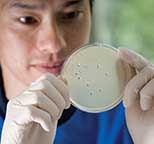Search
News & Events
Heath Ledger Career Development ScholarshipsFive outstanding researchers have been awarded the inaugural Heath Ledger Career Development Scholarships
News & Events
Most late-talking toddlers turn out okThe study is the first of its kind to track language delay from two years of age through to late adolescence, using data collected from the long running Raine
News & Events
New building brings research closer to the bedsidePerth's The Kids for Child Health Research will be located in an integrated building with the state's new children's hospital
News & Events
New insight into Rett syndrome severityA research collaboration between Australia and Israel has identified a genetic variation that influences the severity of symptoms in Rett syndrome.

News & Events
Overseas trip will help unlock the asthma puzzleOne in ten Australians have asthma and Dr Kimberley Wang from The Kids Research Institute Australia is on a mission to find out what causes it.

News & Events
West Australian Empowering Innovation seriesThe Kids Research Institute Australia is proud to feature our commercial spin-off company, Phylogica, in the West Australian's Empowering Innovation series.
he Wesfarmers Centre’s Higher Degree Research (HDR) Scholarship is awarded to candidates of exceptional research potential undertaking a higher degree by research at an Australian university.



